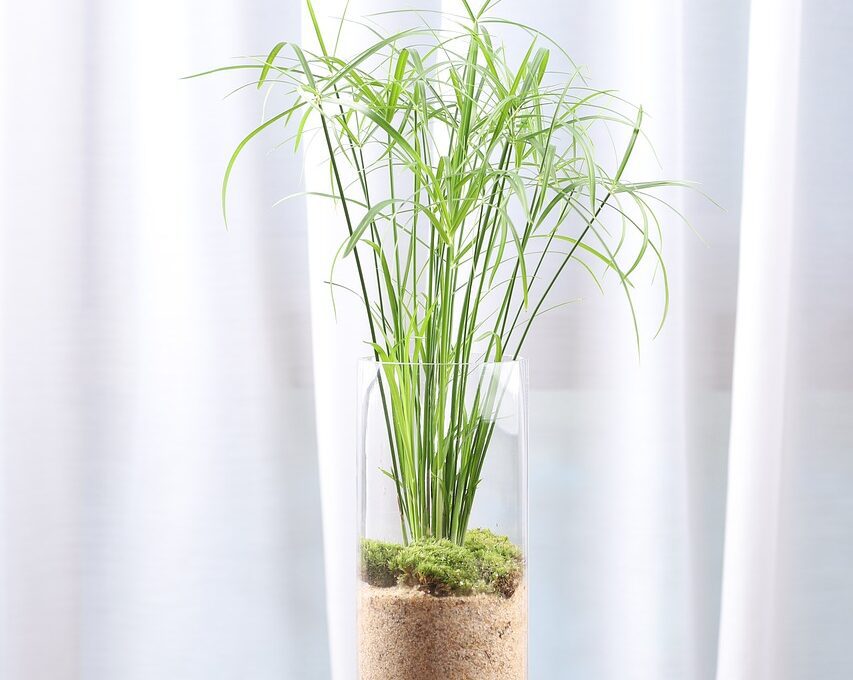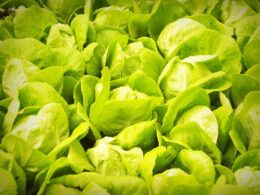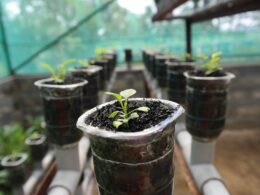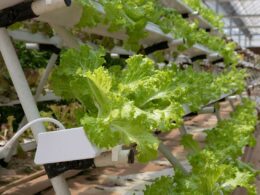Are you considering starting a hydroponic garden? If so, you may be wondering if you need to oxygenate the water in your system. The answer is yes!
Oxygenation is crucial for the success of your hydroponic plants, and neglecting it can lead to poor growth, disease, and even death. In hydroponics, plants are grown without soil, and their roots are submerged in a nutrient-rich water solution.
This means that oxygen is not naturally available to the roots, as it would be in traditional soil-based gardening. Without oxygen, the roots can become waterlogged and suffocate, leading to root rot and other problems.
Oxygenation is the process of introducing oxygen into the water, which ensures that the roots have access to the vital element they need to thrive. In this article, we will explore the importance of oxygenation in hydroponics, the different methods of oxygenating hydroponic water, and how to monitor oxygenation levels in your system.
By the end, you will have a clear understanding of your hydroponic oxygenation needs and the steps you can take to ensure your plants thrive.
Understanding the Importance of Oxygenation in Hydroponics
Oxygen is crucial for healthy plant growth in hydroponic systems and can’t be overlooked. The importance of aeration and the benefits of oxygenation are essential to the success of your hydroponic garden.
In hydroponics, plants are grown in water without soil, and therefore, they rely on the oxygen that’s dissolved in the water to survive. When water is stagnant, it can become depleted of oxygen, leading to poor plant growth and even death in extreme cases.
Oxygenation in hydroponics is crucial because it provides plants with the necessary oxygen they need to grow and thrive. Plants use oxygen in various metabolic processes, including respiration, which is the process of converting stored energy into usable energy. Without oxygen, plants can’t break down nutrients, and they won’t be able to grow.
The benefits of oxygenation in hydroponics are numerous. It helps to prevent plant diseases and root rot, which can occur when there’s an overgrowth of harmful bacteria and fungi in the water. Oxygenation also helps to increase nutrient uptake, leading to faster growth and higher yields.
By providing your plants with the necessary oxygen, you’re creating an ideal environment for them to grow healthy and strong, which will ultimately lead to a more successful hydroponic garden.
Factors to Consider When Oxygenating Hydroponic Water
To maximize plant growth and prevent root rot, it’s crucial to consider factors like water temperature and circulation when setting up your hydroponic system. Oxygenation is also important to consider, as it helps improve nutrient uptake and prevent the growth of harmful bacteria.
Here are four factors to keep in mind when oxygenating your hydroponic water:
-
Water temperature: The optimal temperature for oxygenation is between 65 and 75 degrees Fahrenheit. If the water is too cold, it can slow down the growth of beneficial bacteria. If it’s too warm, it can lead to the growth of harmful bacteria.
-
Water circulation: The more water movement you have in your system, the better the oxygenation will be. This is because oxygen is absorbed into the water from the air. If the water is stagnant, it won’t be able to absorb as much oxygen.
-
Air stones: Air stones are a great way to improve oxygenation in your hydroponic system. They work by creating small bubbles that increase the surface area of the water. This, in turn, allows for more oxygen to be absorbed.
-
Water quality: The quality of your water can also affect oxygenation. If your water contains high levels of dissolved solids or other contaminants, it can reduce the amount of oxygen that can be absorbed.
By considering these factors, you can reap the benefits of proper water oxygenation in your hydroponic system. Not only will it improve plant growth and prevent root rot, but it will also lead to a healthier and more productive system overall. So, take the time to set up your oxygenation system properly and enjoy the rewards of a thriving hydroponic garden.
Different Methods of Oxygenating Hydroponic Water
There are various techniques available for enhancing the aeration of the water in your hydroponic system. One of the most popular methods is by using bubble stones. These stones are connected to an air pump, which produces bubbles that increase the oxygen levels in the water. Bubble stones are easy to use and can be found in most hydroponic supply stores.
Another way to oxygenate hydroponic water is by using air pumps. These pumps work by forcing air into the water, creating bubbles that help to increase oxygen levels. Air pumps are effective in large hydroponic systems, where the water needs constant aeration. They are also relatively affordable and can be found in most hydroponic supply stores.
In addition to bubble stones and air pumps, there are other techniques that can help oxygenate your hydroponic water. For example, some hydroponic systems use waterfalls or cascading water to increase oxygen levels. Others use aeration additives, which are specially formulated to boost oxygen levels in the water.
Whatever method you choose, make sure to monitor your water quality regularly to ensure that your plants are getting the oxygen they need to thrive.
Monitoring Oxygenation Levels in Your Hydroponic System
If you want to ensure that your hydroponic plants are getting enough oxygen, you need to monitor the oxygenation levels in your system. One way to do this is by using a dissolved oxygen meter, which will give you an accurate reading of the oxygen levels in your water.
You can also use visual indicators, such as bubbles or foam, to gauge oxygenation levels and adjust as needed.
Using a Dissolved Oxygen Meter
Measuring the amount of dissolved oxygen in your hydroponic system is crucial for maintaining healthy plant growth. Using a dissolved oxygen meter is the most accurate way to monitor and ensure that your plants are getting the necessary amount of oxygen. Here are four reasons why using a dissolved oxygen meter is important in hydroponics:
-
Accurate measurement: A dissolved oxygen meter provides precise readings of the oxygen levels in your hydroponic system, allowing you to adjust accordingly.
-
Calibration techniques: Dissolved oxygen meters need to be calibrated regularly to maintain their accuracy. Following the recommended calibration techniques will ensure that your readings are reliable.
-
Early detection of problems: Monitoring the dissolved oxygen levels can help you catch potential problems in your hydroponic system early, before they cause significant damage to your plants.
-
Improved plant growth: Proper oxygenation promotes healthy root development and overall plant growth, resulting in higher yields and better quality produce.
By using a dissolved oxygen meter, you can ensure that your hydroponic system is providing the optimal environment for your plants to thrive. Taking these simple steps can give you peace of mind and help you achieve a successful and bountiful harvest.
Visual Indicators of Oxygenation
The visual indicators of oxygenation provide a simple and effective way to assess the health of your plants and the overall balance of your hydroponic system. A well-oxygenated system will have clear water with a consistent flow, while a poorly oxygenated system will have cloudy water with stagnant or slow-moving water.
Additionally, healthy plant roots will be white and firm, while unhealthy roots will be brown and mushy. The benefits of monitoring visual indicators of oxygenation include catching issues before they become major problems and avoiding potential plant damage or loss.
It’s important to maintain proper oxygenation in your hydroponic system to ensure optimal plant growth and yield. By regularly checking the visual indicators, you can make adjustments to your system as needed to maintain a healthy and balanced environment for your plants.
Adjusting Oxygenation Levels as Needed
Adjusting oxygen levels in your hydroponic system is like giving your plants a breath of fresh air, ensuring their roots stay healthy and white, and promoting optimal growth and yield. Here are some tips to help you maintain optimal oxygenation levels in your hydroponic system:
-
Monitor oxygen levels regularly using a dissolved oxygen meter. This will help you identify any potential issues and allow you to take corrective action before it’s too late.
-
Increase water movement and circulation. Good water circulation promotes oxygenation and helps prevent the formation of stagnant areas where oxygen levels can drop.
-
Increase the amount of air pumped into the system. You can do this by adding more air stones or increasing the size of your air pump.
-
Troubleshoot low oxygenation. If you notice that your plants are not getting enough oxygen, check for clogs in the air tubing, adjust water flow, or clean the air stones. These simple steps can help you maintain optimal oxygenation levels and keep your plants healthy and thriving.
By following these tips, you can ensure that your hydroponic system is properly oxygenated, promoting optimal plant growth and yield. And if you encounter any issues, you’ll be able to troubleshoot and take corrective action quickly, helping you maintain a healthy and thriving hydroponic garden.
Conclusion: Determining Your Hydroponic Oxygenation Needs
By determining your hydroponic oxygenation needs, you can ensure that your plants are thriving and growing to their full potential, leaving you feeling confident and satisfied with your hydroponic setup. When determining your oxygenation needs, it is important to consider factors such as the type of plant, the size of the system, and the temperature of the water. By taking these factors into account, you can create an oxygenation plan that works best for your hydroponic garden.
To help determine your oxygenation needs, consider the following table:
| Type of Plant | Oxygenation Needs | Frequency of Oxygenation |
|---|---|---|
| Greens | Moderate | 1-2 times per day |
| Tomatoes | High | 2-3 times per day |
| Peppers | Moderate | 1-2 times per day |
This table can be used as a starting point for understanding the oxygenation needs of your plants. However, it is important to remember that each plant and system is unique, so adjustments may need to be made as needed.
By taking the time to determine your hydroponic oxygenation needs, you can ensure that your plants are receiving the proper amount of oxygen, leading to healthy growth and a successful harvest. Keep in mind that measuring the effectiveness of your oxygenation plan and adjusting the frequency as needed is key to maintaining a thriving hydroponic garden.
Frequently Asked Questions
Can oxygenating hydroponic water cause any negative effects on plant growth?
When it comes to hydroponic water, the question of whether to oxygenate or aerate is a common one. So, which is better? The answer is that both are important.
Oxygenation can increase the amount of oxygen in the water, which can lead to better nutrient uptake in hydroponic plants. However, it’s important to note that too much oxygenation can actually have negative effects on plant growth. This is because excess oxygen can lead to the production of harmful free radicals, which can damage plant cells.
So, it’s important to strike a balance between oxygenation and aeration in order to ensure healthy plant growth in your hydroponic system.
What is the ideal oxygenation level for hydroponic systems?
To ensure optimal plant growth and nutrient uptake in hydroponic systems, it’s crucial to achieve the ideal oxygenation level.
Oxygenating hydroponic water provides a range of benefits for plant health, including increased root growth, improved respiration, and enhanced nutrient absorption.
So, how can you achieve this ideal oxygenation level? One effective method is to use an air stone or diffuser to introduce oxygen into the water. Another option is to use a water pump to create a constant flow of water, which helps to oxygenate the water naturally.
Regardless of the method you choose, it’s important to monitor the oxygenation level regularly to ensure it remains within the ideal range.
By oxygenating your hydroponic water, you can promote healthier, more robust plant growth, and increase your overall yield.
Can I use regular tap water for hydroponics, or do I need to use purified water?
When it comes to hydroponics, tap water may not be the best option. It can contain chemicals, minerals, and bacteria that can harm your plants.
Purified water, on the other hand, is free of those contaminants and can provide a much cleaner environment for your plants to thrive in. Using purified water can also help prevent the buildup of mineral deposits in your hydroponic system, which can clog pipes and cause damage.
So, while it may be tempting to use regular tap water, investing in purified water for your hydroponic system can ultimately lead to healthier and more vibrant plants.
Is it necessary to oxygenate the water continuously, or can it be done periodically?
When it comes to hydroponics, you might wonder if it’s necessary to continuously oxygenate the water. The truth is, periodic oxygenation is beneficial for your plants, but there are also some drawbacks to having static water.
Oxygen is crucial for your plants’ root systems to function properly, and without it, they may not be able to absorb nutrients effectively. Periodic oxygenation can also help prevent the growth of harmful bacteria in your system.
However, static water can also have its benefits, such as allowing for the buildup of beneficial microorganisms. Ultimately, it’s up to you to weigh the benefits and drawbacks and decide what works best for your hydroponic setup.
Are there any natural ways to oxygenate hydroponic water, without the use of equipment?
Looking for a natural way to oxygenate hydroponic water? There are DIY solutions that can help.
One option is to add an air stone to your setup. This can help increase oxygen levels and improve plant growth.
Another method is to use plants that naturally release oxygen into the water, such as water lettuce or water hyacinth. While these natural methods can provide benefits such as increased plant growth and improved water quality, there are also drawbacks to consider.
For example, air stones may not be as effective as other equipment and plants may require more maintenance. Ultimately, it’s up to you to weigh the pros and cons of using natural methods to oxygenate your hydroponic water.
Conclusion
So, do you need to oxygenate water in hydroponics? Absolutely! Adequate oxygenation is crucial to the health and growth of your plants in a hydroponic system.
Without enough oxygen, roots can suffocate and die, stunting the growth and development of your plants. To ensure optimal oxygenation in your hydroponic system, there are factors to consider such as water temperature, water movement, and the type of oxygenation method used.
Common methods include air stones, water pumps, and oxygen generators. It’s important to monitor oxygen levels regularly to ensure your plants receive the necessary oxygen they need to thrive.
Overall, it’s important to prioritize proper oxygenation in your hydroponic system to achieve successful plant growth. Be sure to research and consider all options before determining the best oxygenation method for your specific setup.
With the right equipment and monitoring, you can ensure your hydroponic plants receive the necessary oxygen for healthy and fruitful growth.









